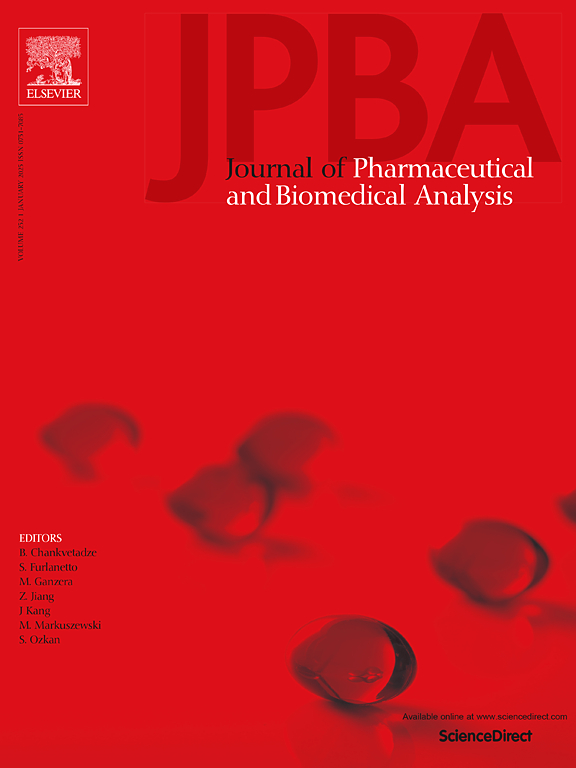The UHPLC-MS/MS method for the determination of 26 synthetic benzimidazole opioids (nitazene analogs) with isomers separation
IF 3.1
3区 医学
Q2 CHEMISTRY, ANALYTICAL
Journal of pharmaceutical and biomedical analysis
Pub Date : 2025-03-05
DOI:10.1016/j.jpba.2025.116796
引用次数: 0
Abstract
The global opioid crisis is a public health emergency characterized by the widespread misuse of opioid drugs, leading to high rates of addiction, overdose, and death. Initially driven by the over-prescription of opioid painkillers, it has evolved into a worldwide epidemic exacerbated by the rise of potent synthetic opioids. Benzimidazole opioids (‘nitazenes’) are one group within this class of compounds that have garnered increasing attention in recent years due to their addictive potential and growing presence in illicit drug markets. Because of their high potency, low concentrations in biological samples are expected, implying the need for very sensitive and selective methods. In the presented paper, an UHPLC-QqQ-MS/MS method was developed for the determination of 26 nitazenes in biological samples (including metabolites), with simultaneous separation of structural isomers. Biological samples were prepared using liquid-liquid extraction (LLE) at pH 9, and quantification was performed using MRM mode. Metonitazene-d3 was used as the internal standard. Precision and accuracy did not exceed 14.9 % and ± 14.1 %, respectively. Recovery and matrix effect values were 80.6–120.4 % and ± 20.4 %. The method achieved a remarkably low limit of quantification (LOQ), with values of 50 pg/mL for flunitazene and 10 pg/mL for all other compounds. Furthermore, MS/MS (QqQ) spectra were collected for all compounds, enabling the evaluation of fragmentation pathways and characteristic ions for different structural analogs. The knowledge regarding the fragmentation mechanisms of these compounds, along with the ESI-MS spectra provided in this paper, can impact the future identification of newly emerging nitazene analogs.
求助全文
约1分钟内获得全文
求助全文
来源期刊
CiteScore
6.70
自引率
5.90%
发文量
588
审稿时长
37 days
期刊介绍:
This journal is an international medium directed towards the needs of academic, clinical, government and industrial analysis by publishing original research reports and critical reviews on pharmaceutical and biomedical analysis. It covers the interdisciplinary aspects of analysis in the pharmaceutical, biomedical and clinical sciences, including developments in analytical methodology, instrumentation, computation and interpretation. Submissions on novel applications focusing on drug purity and stability studies, pharmacokinetics, therapeutic monitoring, metabolic profiling; drug-related aspects of analytical biochemistry and forensic toxicology; quality assurance in the pharmaceutical industry are also welcome.
Studies from areas of well established and poorly selective methods, such as UV-VIS spectrophotometry (including derivative and multi-wavelength measurements), basic electroanalytical (potentiometric, polarographic and voltammetric) methods, fluorimetry, flow-injection analysis, etc. are accepted for publication in exceptional cases only, if a unique and substantial advantage over presently known systems is demonstrated. The same applies to the assay of simple drug formulations by any kind of methods and the determination of drugs in biological samples based merely on spiked samples. Drug purity/stability studies should contain information on the structure elucidation of the impurities/degradants.

 求助内容:
求助内容: 应助结果提醒方式:
应助结果提醒方式:


